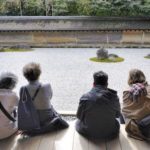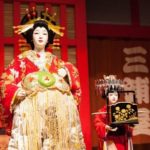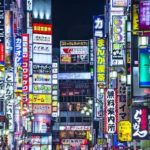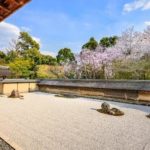By Victor Block
The traffic-clogged streets, sleek towering skyscrapers and dazzling lighted billboards could be in any city in the United States. So, too, could familiar fast food chain restaurants and signs promoting brands of electronics, clothing and other goods that are popular with Americans.
But this setting is half a world away in Tokyo, Japan. For visitors to that country, it is among many similarities that the two nations share – along with dramatic differences in their history and culture. These discrepancies – foreign and familiar, old and new – provide unexpected pleasures of a visit to that intriguing destination.
The roots of modern Tokyo were planted during the so-called Edo period, which lasted from 1603 to 1868. In the early 17th century, Edo (as present-day Tokyo was known) was a modest fishing village, until a powerful shogun (military dictator) made it his seat of power. Today, with 13.5 million people living in the city and another 9 million in its suburbs, it is the most populous metropolitan area in the world.
A good place to begin a tour is sprawling Ueno Park, which is home to elegant temples, graceful pagodas, a number of major museums and a large zoo. Not surprisingly, resident giant pandas are the most popular zoo inhabitants.
Any visit to Tokyo also should include the Edo Castle, which was built in 1457 and served as the residence of the shoguns. The present Imperial Palace, which is the primary residence of the emperor of Japan, sits on the base of the former castle, and the original main gate, some walls, turrets and moats survive.
A more in-depth plunge into Japan’s feudal past is provided at the Edo Museum, where exhibits demonstrate how the small village evolved into the vast metropolis of today. Among exhibits are intricate scale models realistically representing buildings and towns from the 17th through 20th centuries. Cultural icons include a life-size reconstruction of a kabuki theater, where that classical dance-drama form of entertainment has been popular since the early 17th century.
The history and traditions of Japan also are well preserved in the city of Kyoto. So endowed is it with historical and artistic treasures that during World War II it was removed from the list of possible bombing targets by the United States.
With some 1,600 Buddhist temples, 400 Shinto shrines, magnificent palaces, lovely gardens and more, the welcome challenge for visitors is how to experience and enjoy as much as possible in a limited time.
A must-see is the Ryoanji Temple, which is famous for its lovely rock garden. Created around 1500 as a place for Zen meditation, it consists of a field of immaculately manicured white gravel raked into a wave-like design surrounding rock islands.
One of the most popular buildings in Japan is the Rokuon-ji (Temple of the Golden Pavilion), a Buddhist hall which stands at the edge of a small pond. Built in the architectural style of aristocratic mansions in Kyoto during the eighth to 12th centuries, its most distinctive feature is a gold leaf coating which covers the upper two levels of the three-story structure.
A delightful tea house was the setting for another immersion into Japanese culture. A tea master demonstrated the time, precision and ritual involved in the simple act of preparing the beverage, attributes that pervade many aspects of Japanese life.
No matter how interesting centuries-old traditions, how magnificent the temples and shrines that grace Kyoto, and how beautiful architectural gems from the Edo period hidden beneath the modern veneer of Tokyo, it was five days that I spent walking along a section of an ancient trail between those cities which provided the most meaningful immersion in the history, heart and soul of Japan. That part of the story will be told in next month’s article.
As for a good way to visit that country, I traveled with Walk Japan, which has conducted tours there since 1992 and certainly lives up to its name. Its trips range from city sightseeing to trail walking to more strenuous experiences, and even in Tokyo and Kyoto my group logged several miles by foot each day.
The tours stay at local inns, dine at family-run restaurants and have other features that bring travelers (a maximum of 12 on most itineraries) into close contact with Japanese people from various walks of life.
In addition to accommodations, meals, sightseeing and outstanding guides, Walk Japan provides participants with an in-depth introduction to both Japanese history and contemporary life that is as enjoyable as it is informative.
For more information, log onto walkjapan.com.
















